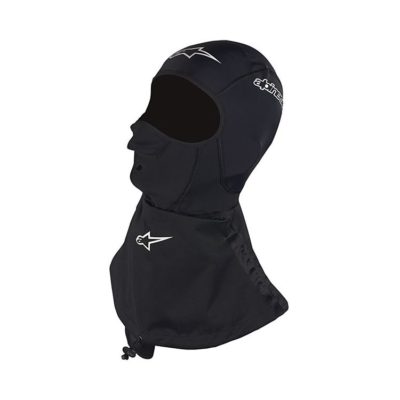Every October it’s the same problem. The first cool days of the year arrive, and my helmet visor starts to fog up.
Over the years, I’ve discovered a lot of products and tricks that help prevent fogging and keep my visor crystal clear.
So here are the six most effective ways I’ve found to stop helmet visor fogging.
1. Pinlock Inserts
In my opinion, Pinlock inserts are by far the best way to prevent visor fogging. They consist of a laminate strip that snaps in behind the main visor.
A silicon lining then seals the insert to the visor and creates a bubble of air in between the visor and the insert.
Because this bubble maintains the same temperature as the inside of the helmet, it keeps your breath from condensing on the visor.
Pinlock visor inserts are inexpensive and effective ways to prevent fogging, but you do need to keep a couple things in mind. Most importantly, you need a helmet that has the pins to accept them.
These days, some top-shelf helmets even come with Pinlock inserts, so check for that as well. If your helmet doesn’t come with an insert but does have the pins, consider this option.
Read more about pinlock for motorcycle helmets.
2. Other Anti-Fogging Inserts
Besides Pinlock inserts, the market is full of other inserts that you can apply to the inside of your helmet visor, kind of like a screen protector for your phone.
They usually prevent fogging by absorbing moisture. They’re a good option if you have a helmet you like that doesn’t support Pinlock inserts.
3. Facemasks
Visor fogging happens more in fall and winter weather when the air outside the helmet is colder than inside.
Since it’s cold outside anyway, an easy solution for fog is wearing a face mask or balaclava. A mask absorbs the moisture in your breath and keeps it from reaching the visor and condensing.
In some cases, you can even find facemasks specifically designed to prevent fogging. These are usually made of neoprene and just fit around your nose and mouth.
4. Anti-Fog Sprays and Cleaners
Certain chemicals with water-repellent properties can prevent fogging when applied to the inside of your helmet visor. You can get these as individual sprays or included in cleaning products, both as sprays and wipes.
Personally, I like wipes because it’s easy to keep a pack of them in your backpack. If you have a sudden fog-up, you can pull over and wipe off the visor while applying the anti-fogging chemical.
Either way, both the sprays and wipes are handy options. Just know they aren’t a permanent solution. You’ll have to apply them repeatedly to maintain the effects.
Ventilation
Visor fogging is caused by the temperature difference between the outside and inside of the helmet. When cold air outside the helmet cools the visor, water vapor from your breath will condensate on it.
Ventilation can help solve this by equalizing the temperature inside the helmet. Vents in the front of the helmet allow air to enter the helmet, circulate, and then exit out exhaust vents in the back. This way hot air doesn’t get trapped inside.
Plus, the ventilation allows water vapor from your breath to leave the helmet, further preventing condensation.
See this article for our guide to the best ventilated helmets.
Keep Your Visor Clean
Last but not least, you can do a great deal to prevent fogging simply by keeping your visor clean.
In case you slept through 9th-grade physical science, cloud condensation involves water droplets forming around pieces of dust in the air.
The same thing can happen with your visor. Dirt and grime can provide more surfaces for the water vapor in your breath to cling to.
At the very least, wipe down your visor with soap and water as often as you can and consider springing for some dedicated visor cleaner.
For more read: How to clean your helmet visor




